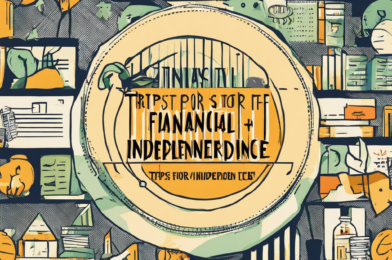Photo by Alexander Mils on Unsplash
Achieving Financial Independence: Valuable Tips to Set You on the Right Path
Financial independence is a goal many aspire to, but it can seem like an elusive dream for some. However, with careful planning and a shift in mindset, anyone can take control of their financial destiny and work towards true financial freedom. The first step is to understand what financial independence means to you personally. Do you want to retire early, free yourself from debt, or simply reach a stage where your investments and savings can sustain your desired lifestyle? Defining your version of financial independence will give you a clear target to work towards.
Assess your current financial situation by evaluating your income, expenses, and savings. This step is crucial as it provides a realistic picture of where you stand and what adjustments need to be made. Track your spending over a few months to identify areas where you can cut back and redirect funds towards financial goals. Understanding your cash flow will empower you to make informed decisions and create a budget tailored to your needs.
Paying off debt is a critical step towards financial independence. High-interest debt, such as credit cards, can hinder your progress and eat into your savings. Create a plan to aggressively tackle debt by prioritizing payments with the highest interest rates first. There are various strategies to become debt-free, and finding one that suits your circumstances is key. Consider debt consolidation or refinancing to reduce interest rates and speed up the debt repayment process.
Building an emergency fund is a vital pillar of financial independence. Life is unpredictable, and without an emergency fund, unexpected expenses can derail your financial plans. Aim to save enough to cover at least three to six months’ worth of living expenses. This safety net will provide peace of mind and ensure that you’re not forced into debt or financial hardship due to unforeseen events, such as medical emergencies or job loss.
Maximizing your savings rate is crucial for achieving financial independence. Analyze your budget to see where you can cut back on non-essential expenses and redirect those funds into savings or investments. Consider automating your savings by setting up regular transfers from your paycheck or monthly income to dedicated savings and investment accounts. That way, you save effortlessly without having to remember to transfer funds manually each month.
Investing is a powerful tool to grow your wealth and achieve financial independence. Educate yourself about different investment options such as stocks, bonds, real estate, or retirement accounts. Diversifying your investments can help manage risk and maximize returns over time. Seek advice from financial professionals or utilize online resources to make informed decisions that align with your risk tolerance and financial goals. Remember, investing carries inherent risks, so ensure you understand the potential downsides before committing your money.
Financial independence is a journey, and staying motivated along the way is essential. Set short-term, achievable milestones to keep yourself on track and celebrate your progress. Surround yourself with like-minded individuals who share your financial aspirations. Joining communities or seeking out mentors who have achieved financial success can provide valuable support and accountability. Their insights and guidance can help navigate common pitfalls and keep you focused on your long-term goals.
Lastly, remember that financial independence is a personal journey, and what works for others may not work for you. Be flexible and adapt your strategies as you gain more knowledge and experience. Continuously educate yourself about personal finance, stay disciplined with your savings and investment plans, and be open to adjusting your budget and goals as your circumstances change. Financial independence is a marathon, not a sprint, and with persistence and a thoughtful approach, you’ll be well on your way to achieving your financial dreams.






